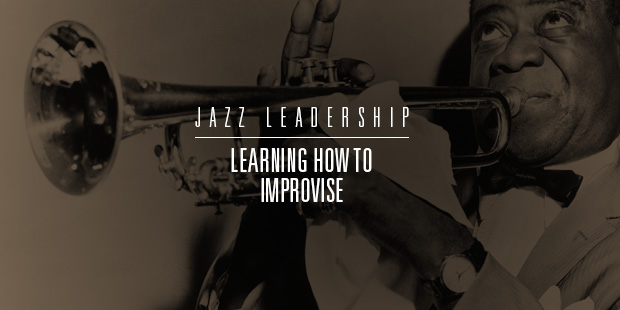
Jazz Leadership Means Learning How to Improvise
I used to think that running an organization was equivalent to conducting a symphony orchestra. But I don’t think that’s quite it; it’s more like jazz. There is more improvisation.
– Warren Bennis
If you watch an orchestra, you can spot the top dog right away. He (usually) is up on the podium, removed from the others, the only one with the complete “plan” in his hands.
The jazz group, on the other hand, offers up no such easy clues.
The leader is indistinguishable. Each player takes the limelight when it’s their time to lead, and stands aside when it’s another’s. Behind the scenes, the jazz-leader is responsible for the vision and the strategy. But in performance, leadership and followership rotate.
Traditional leadership has long looked like the orchestral conductor. But we’re living within a whirlwind of change, and the authoritarian individual, working to a fixed, detailed plan from a detached position of control, isn’t equipped to deal with it.
To survive these new circumstances, we must all learn how to improvise (from the Latin “improvises”, meaning “not seen ahead of time”). We need leaders who:
• Are great improvisers
• Establish the best structures for uncertainty
• Adapt to change in real time
• Inspire others to co-create their vision of the future
We need leadership in a new groove. We need jazz-leadership.
Penelope Tobin presents the theory of jazz-leadership, drawing on her past experience as a professional jazz pianist and composer. Founder and CEO of Barrier Breakers®, the soft skills training and development consultancy, she is responsible for the award-winning process BBM®, which has been used since 2000 to design thousands of successful change programs for organizations and their leaders.
>> Download Tobin’s enlightening work on Jazz Leadership here.

Tags: Leadership Engine, Penelope Tobin, Staff Development, jazz leadership












